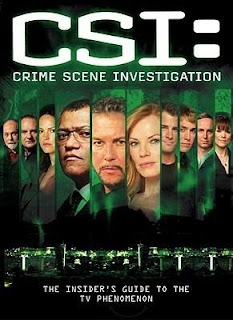 I may have missed my calling in life because if I had it to do all over again, I might have tried to be a forensic anthropologist. "Suuuurrrreeee, Susan," you're probably saying. "Riiiiigggghhhht." That would mean I would actually have to stomach the sight of blood or worse, decomposing flesh. And I might actually have to touch a dead body. Ok, you're right. That wouldn't be for me. I have a hard time cleaning up cat vomit.
I may have missed my calling in life because if I had it to do all over again, I might have tried to be a forensic anthropologist. "Suuuurrrreeee, Susan," you're probably saying. "Riiiiigggghhhht." That would mean I would actually have to stomach the sight of blood or worse, decomposing flesh. And I might actually have to touch a dead body. Ok, you're right. That wouldn't be for me. I have a hard time cleaning up cat vomit.So I guess I'll just have to stick with reading books about forensic anthropologists. See, maybe this is all about that adolescent who is still stuck inside me, because teens LOVE murder mysteries! And forensic anthropology is all about solving some murder mysteries. It's about storytelling, too--about listening to the stories bones tell and being the voice for voiceless victims.
If you're looking for some good young adult novels (or books teens will pick up and consider reading) about forensic anthropology, consider Alane Ferguson's forensic mystery series that begins with The Christopher Killer. The series follows teen-aged Cammie Mahoney as she assists her coroner-father in solving murders in their Colorado town. Cammie, who wants to be a forensic scientist when she grows up, is attracted by the science of forensics, and she--and readers--will learn a lot about the field as they read. Check out Alane Ferguson's interactive website here: http://www.alaneferguson.com/
You might also want to check out Jefferson Bass's novel, Carved in Bone, or other books based on the work of famous UT forensic anthropologist David Bass and the Body Farm, located on the UT campus.
 Carved in Bone is a fun story, especially if you live in or near Knoxville or the Great Smokies. Dr. Brockton (we can assume is Dr. Bass) is called in by the Cooke County sheriff's office to help solve the case of Leena Bonds, a woman discovered preserved in Russell's Cave. Her murder involves lots of colorful locals, though, who would prefer the truth about her death not get out. Lots of local flavor and history here (maybe a little too stereotypical for my tastes), and a good mystery story to boot. Readers will learn more about how forensic anthropology is done. Perfectly fine for the upper middle school and high school classroom.
Carved in Bone is a fun story, especially if you live in or near Knoxville or the Great Smokies. Dr. Brockton (we can assume is Dr. Bass) is called in by the Cooke County sheriff's office to help solve the case of Leena Bonds, a woman discovered preserved in Russell's Cave. Her murder involves lots of colorful locals, though, who would prefer the truth about her death not get out. Lots of local flavor and history here (maybe a little too stereotypical for my tastes), and a good mystery story to boot. Readers will learn more about how forensic anthropology is done. Perfectly fine for the upper middle school and high school classroom.A more sombre read is Clea Koff's nonfiction account of her UN-sponsored missions to Rwanda, Bosnia, Croatia, and Kosovo to unearth physical evidence of war crimes and crimes against humanity. Here's the editorial review from Booklist:

"Any title containing the words mass graves portends some tough reading, and Koff's unblinking, direct memoir is not lacking in ghastliness. One of her aims, however, is to contrast her interior reactions to her work of exhuming and examining the victims of the Balkan and Rwandan massacres of the early 1990s with the meticulous professionalism needed to conduct it. Koff's observation that "when I analyze human remains I am interested, not repulsed" is shown in her objective descriptive writing about particular victims' physical characteristics and traumas. Away from the grave or autopsy table, however, Koff allows glimpses of the mental effort her professionalism requires by relating her numerous nightmares and manifestations of stress. She accepts this burden out of a deeply idealistic motivation--her hope that her career in forensic anthropology will reduce human rights violations in the world. Koff also writes about incidents of her field experiences such as privations, the dangers of gunfire and mines, and the interpersonal relations with her colleagues and UN guards."
This is a much grimmer, darker read without all the fictional cushions. Still suitable for older, mature adolescent readers, especially those adolescents who--like Koff--want to make a difference in the world.
 Also, consider this fun book series for the classroom: the Bones books, based on the Fox TV show by the same name. The investigative crime show drama is inspired by real-life forensic anthropologist and best-selling novelist Kathy Reichs (the Temperance Brennan novels).
Also, consider this fun book series for the classroom: the Bones books, based on the Fox TV show by the same name. The investigative crime show drama is inspired by real-life forensic anthropologist and best-selling novelist Kathy Reichs (the Temperance Brennan novels). Last but not least, these CSI books were hugely popular when I taught middle school. Might make a good addition to your classroom library shelves if you're trying to motivate reluctant readers.
Last but not least, these CSI books were hugely popular when I taught middle school. Might make a good addition to your classroom library shelves if you're trying to motivate reluctant readers.
No comments:
Post a Comment